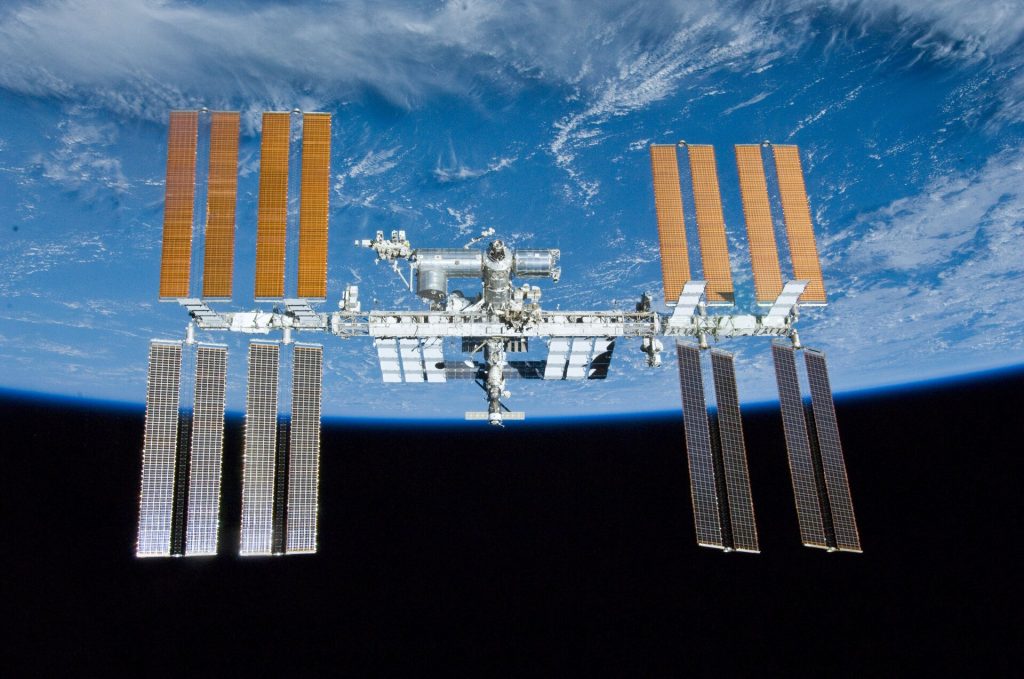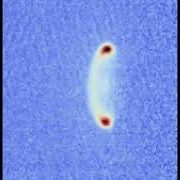Three interesting research projects in space explained
Author: Lisanne Vermaas, Editor Leonardo Times
The International Space Station is the biggest laboratory in space, and has continuously housed astronauts for more than twenty years. More than 3,000 research investigations have been performed in its microgravity environment on board the station [1]. What interesting research has been done, and what results has it produced?
ISS AS A LABORATORY
The first segment of the ISS, The Zarya Control Module was launched in 1998 [1]. It was the first step in a long-lasting collaboration between 5 space agencies: NASA (United States), Roscosmos (Russia), ESA (Europe), JAXA (Japan) and CSA (Canada). It took a total of 40 missions to assemble the station as we know it today and still, the station continues to grow as modules are added. As we speak, it contains four laboratory modules: Destiny (NASA), Nauka (Roscosmos), Columbus (ESA) and Kibo (JAXA). Experiments were set up as soon as the first human entered the station, which originally consisted of only two modules. Initially, most of the research projects aimed to understand the effect of space on the human body [2], but in 2005, the ISS was designated as a United States National Laboratory, making this research facility available to a broader range of U.S. researchers and thus a more diverse spectrum of research topics.
STEM CELLS
In the third quarter of 2022, NASA selected five new research projects for the United States National Laboratory, one of which is a project from Cedars-Sinai Medical Center. The project goal is to establish a foundation for the in-space production of stem cell therapies. Stem cell therapy is a promising treatment for patients suffering from various diseases such as cancer, dementia and strokes. Stem cells are unspecialized and are able to differentiate into any type of cell found in the human body, replacing the damaged tissue [3]. In the gravity field on the Earth’s surface, stem cells grow in two-dimensional cell structures, whereas a microgravitational environment enables three-dimensional growth. This more closely resembles the stem cells grown in a human body and therefore increases cell growth [4]. In 2020, Peng Huang et al. found that a particular type of stem cell, namely the mesenchymal stem cells inducing tissue repair, can grow safely in a microgravitational environment such as the ISS [5]. It was even discovered that the cells cultured in space were more immunosuppressive than the control group on earth, meaning that the cells are less likely to be rejected by the receiver. As we now know that stem cells can grow in a safe and feasible manner in space, it is worth looking at implementing these stem cells into therapy for treatment. This will be researched in the upcoming years.
NEUTRON STARS AND CT SCANS
Neutron stars are composed of the densest matter known and are what remains when a supergiant star (10-25 solar masses) explodes in a supernova, as it has run out of fuel. If you were to further compress a neutron star, a black hole would form – a body with such a big gravitational pull that even light cannot escape. [6]. The Neutron star Interior Composition Explorer (NICER), an ISS payload since 2017 seen in Figure 1, carried out substantial research on these neutron stars [7]. NICER studies neutron stars using its X-ray Timing and Spectroscopy Instrument – unique for its accurate timing. The spectroscopy performed in the soft X-ray band (0.2-12 keV) will detect X-ray pulses from a highly magnetized, fast-rotating neutron star: a pulsar. By tracking these ‘hot spots,’ the mass and radius of the pulsar can be determined, accounting for the visual distortion induced by the large mass of the pulsar. In 2019, NICER discovered a spike of X-Rays induced by a thermonuclear flash on the surface of a pulsar and delivered the first map of surface hotspots on a pulsar. In 2021, NICER contributed to the discovery of the less squeezable heart of pulsars than thought before [8].
In order to verify NICER’s performance on the ground, it required an X-ray source to produce X-rays at commanded times, acting as a control. Traditional X-ray sources are limited by the speed at which they can be turned on and off. Therefore, a new method was necessary to obtain highly accurate results. Hence, the Miniaturized High-Speed Modulated X-ray Source (MXS) was developed. The source makes use of electrons produced by shining UV light on a photocathode material [9]. These electrons accelerate onto a target material. Upon impact, this deceleration of electrons results in X-rays, characteristic of the target material. Interestingly, this technique was adopted by neuroradiologist Dr Raj Gupta and was used to improve CT scans [8]. A new CT scan was developed, containing a ring of X-ray sources which can be turned on and off, depending on the need. This smaller CT scan makes this imaging technique more accessible worldwide, reducing the radiation amount received by the patient, therefore has possible space applications.
THE COLD ATOM LABORATORY
Temperature is related to the motion of atoms. As the atoms in a material start to vibrate and move more, the material is said to heat up. It can be gaseous, liquid, solid or plasma depending on the temperature and characteristics of the material. However, for extreme low temperatures, approaching absolute zero (-273.15 degrees Celsius to be precise), a fifth state of matter exists: the Bose-Einstein’s Condensate (BEC). In this state, the atoms are almost immobile. From the uncertainty principle of quantum physics, since the velocity measurement is quite accurate near absolute zero, the position of the atoms becomes proportionally ill-defined up to a point where their position can overlap [10]. The atoms are said to be in the same quantum state and act as one. Albert Einstein predicted the fifth state in 1924, but it was not until 1995 that Eric Cornell and Carl Wieman managed to transition matter to the BEC state for the first time. However, matter in the BEC state does not live on Earth for long – only a couple of milliseconds. Hence, the interest in producing the state in space. In 2020, matter was transitioned to the BEC state on board the ISS for the first time and lived for a couple of seconds.

In June 2022, NASA published the article ‘Observation of ultracold atomic bubbles in orbital microgravity’ in the journal Nature [11]. In this study, they cooled atoms to minus 273 degrees Celsius and shaped them into hollow spheres – impossible in a gravitational environment. The ultracold bubbles (seen in the figure on the left) are formed within a vacuum chamber using magnetic fields and are only just the beginning! The next step is to transition these into the BEC state such that the matter in the fifth state can be studied [12]. What is so special about this experiment compared to the first time the BEC state was achieved in space, is the shape. Theory suggests that these bubbles can be made into vortices, which might reveal more characteristics of matter in the BEC state.
CONCLUSION
Thus, the International Space Station is an incredibly important laboratory for science. It has allowed us to carry out research in an environment incomparable to earth. It was possible to study the effects of space on the human body extensively. As the ISS is now open to scientists out of the space industry, more and more disciplines can benefit from this unique international achievement. Physics, biology, medicine, astronomy and many more disciplines have run studies 400 km above the surface of the earth and the results benefit many aspects of our daily lives.


